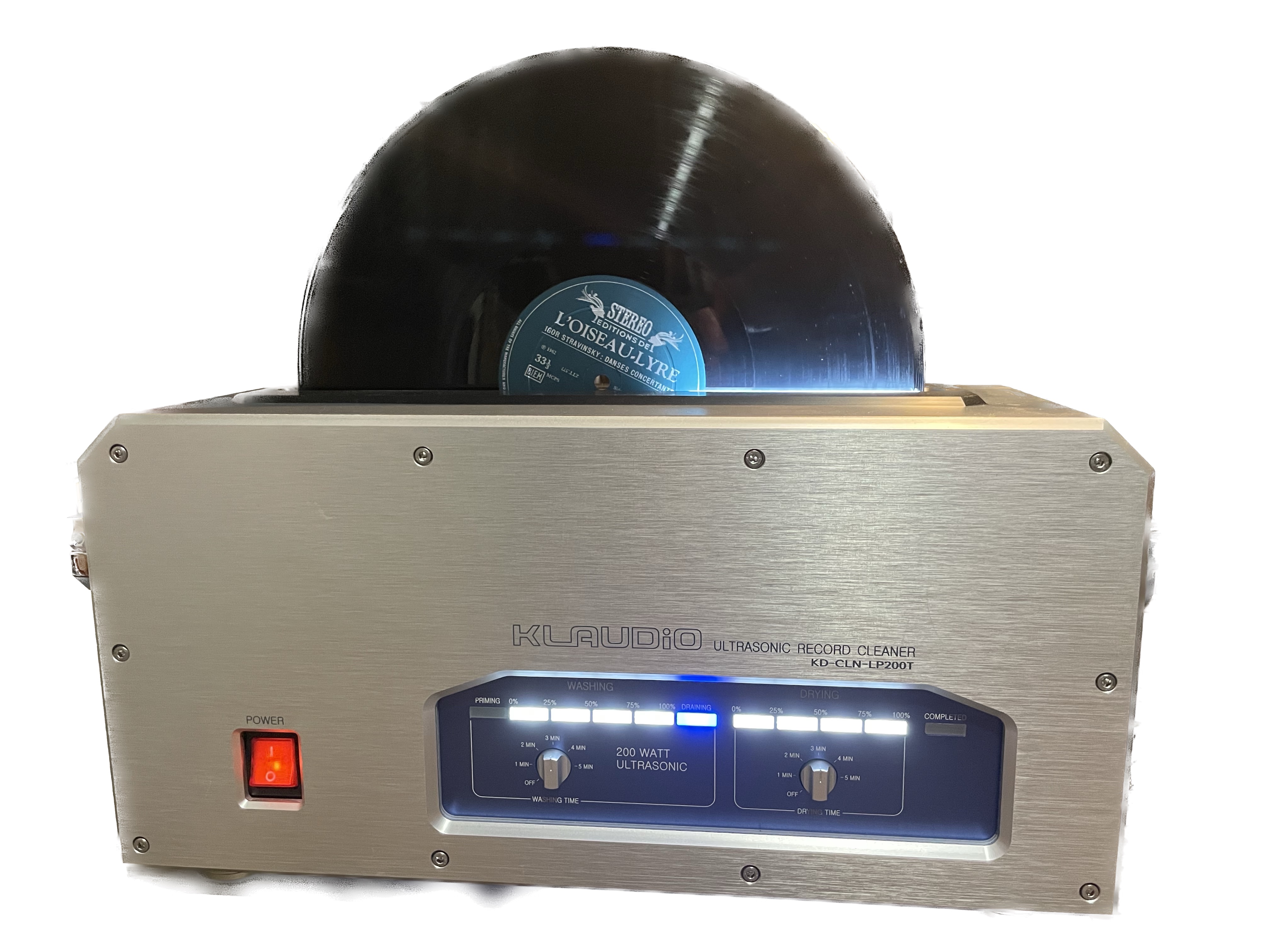A Year With KLAUDIO's KD-CLN-LP200T Ultrasonic Record Cleaner
it's been a very clean year
About a year has passed since publication of the KLAUDIO ultrasonic cleaning machine review so now's a good time to tell you how it's been working and how well it cleans records. Also, this is a good time to again cover some basics because there's so much online nonsense and misinformation, though it's also true that well-informed opinions sometimes differ.
This machine has had, as you can imagine, a great deal of use. Daily use. Not "industrial strength" use—I don't run a record store—but still a lot of spins. It has been 100% reliable and not in need of any maintenance other than occasionally changing the water and once so far, changing the inexpensive ($6.99) filter.
If you look at the comments under that review there's a great deal of useful and some contradictory information regarding transducer frequency and power and what's best. I'm not going to get into that here. You can read that there.
But I will add that if you're going to fan-dry a record, which the KL does, do not use a surfactant, or any kind of detergent because it's just going to be dried onto the record and leave a coating. Also, don't put really dirty records in this or any tank type machine. Surface dirt should be pre-cleaned with something like the Orbitrac (back in production) or a SpinClean if you have one.
My experience with this machine with no additives and just plain reverse osmosis water is that it does an amazing job not only cleaning but removing pops and clicks on many records that have had them for years (sometimes decades). The records come out quiet and shiny. And I've not experienced any groove damage or heard any post-cleaning high frequency loss.
I also clean new records using a two minute cycle because new records are usually pretty dirty and/or dusty. It's just the reality of pressing plant life. I've also experienced impossible to remove fingerprints on the lead out groove area of some older records. They appear 'baked in' and only physical scrubbing can remove them and even then some don't budge but given where they appear and since they don't move, who cares? Normal "oily" finger prints do disappear.
Yes, this machine is costly, but its build quality is unsurpassed. If you can afford it, you will not regret the purchase. I've heard back from many buyers who all agree except for one who was bothered by the inner groove fingerprint. I'd tell him to get a life but he's got quite an amazing one, so i didn't!
Dry-only and wash-only cycles are available and you can independently set both wash and dry times up to five minutes each. I like the external water reservoir.

When you're ready to change the water—it's so inexpensive I do it more often. I keep a five gallon bucked handy and simply remove the hoses from the machine, pour the water into the bucket, fill the tank up again and dump the bucket into the bathroom sink. A less than five minute operation.
If you can't swing this deal there are less costly machines out there—some, but not all of which will do a good job including the Kirmuss, which I also own and use for 'record restoration' (and it works) but be careful with "recommended" surfactants and be mindful of frequency, wattage and generated heat. Especially be cautious with online recommendations from people who proclaim their expertise and offer you home brew cleaning fluids and methods. Also, I'd be careful about "experimenting" with home brew fluids in any cavitation based machine.
KLAUDIO has a cooling accessory for "industrial" users but i've never had an issue with temperature because I'm not a "serial cleaner". I'll do a few records at a time MAX and why do it any other way? What's great about the machine is its ease of use, there not being any detergents in the water, and how easy it is to dump the water and start over for a few dollars.
People who comment that their vacuum-based machines are 'good enough' or 'as good' simply haven't experienced what proper cavitation can do for record cleaning. The quiet is amazing. As is this machine









































